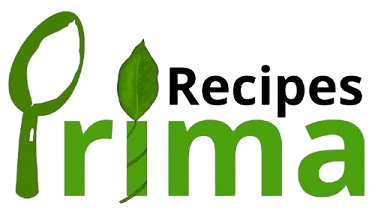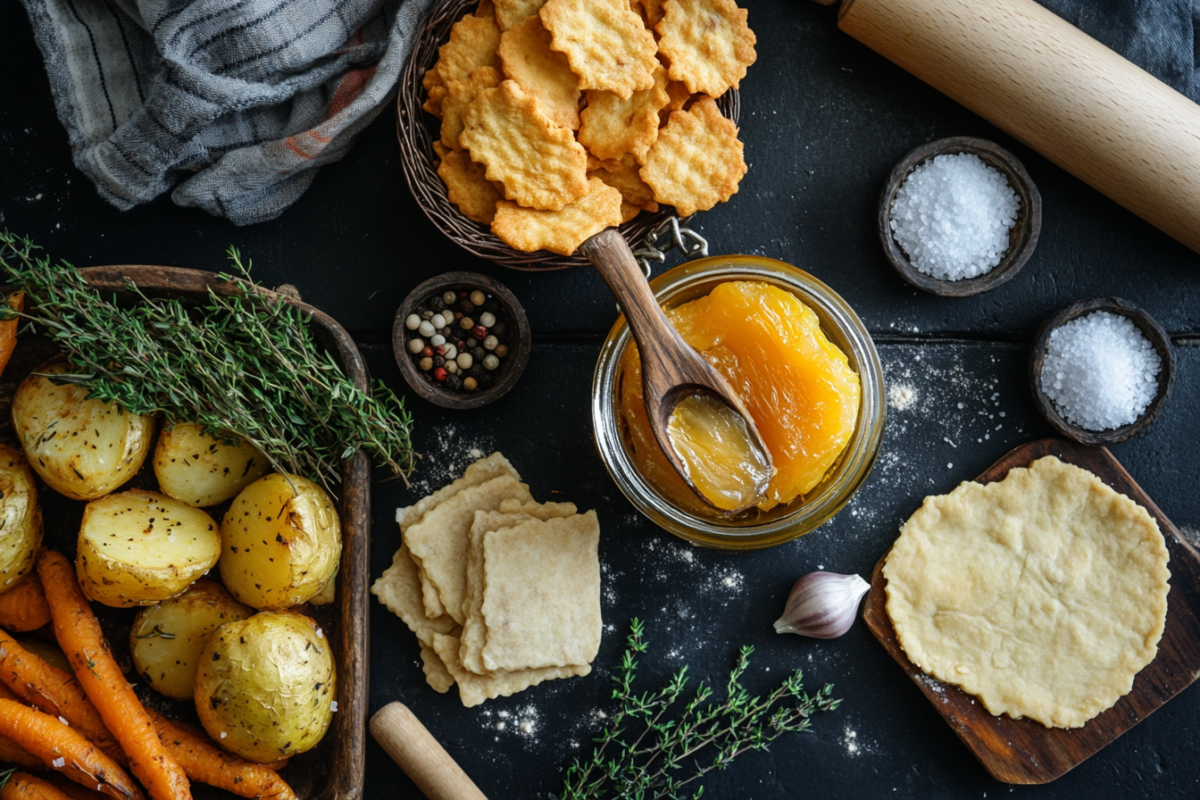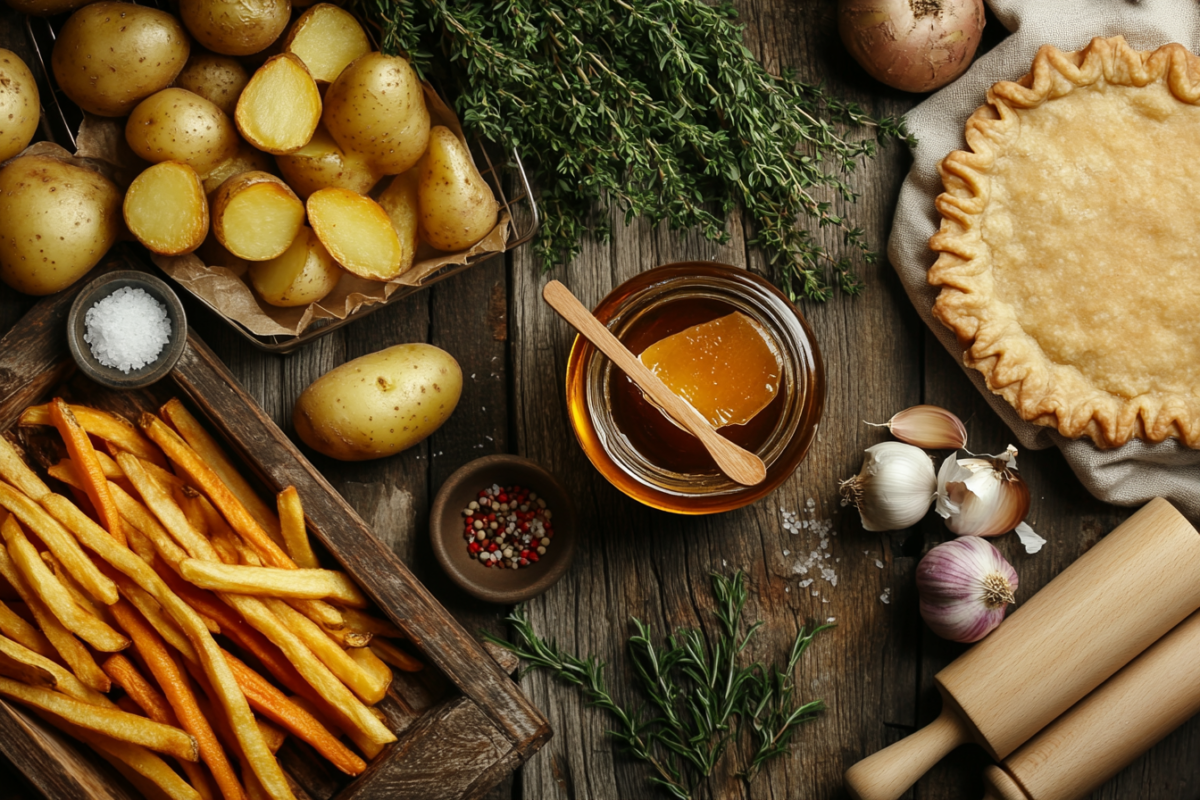Beef tallow is one of those kitchen staples that has been around for centuries. While it’s recently seen a surge in popularity, its roots go deep into history, where it was cherished for its rich flavor and versatility. Whether you’re keen on exploring healthy fats for cooking or seeking natural alternatives for skincare, beef tallow has something to offer. In this article, we’ll dive into everything you need to know about this sustainable fat, from its nutritional benefits to its wide range of uses in the kitchen and beyond. Let’s break it down step by step and uncover why beef tallow should be your next go-to ingredient.
What is Beef Tallow?
Beef tallow is rendered beef fat that’s typically obtained from the fat around the kidneys and loins. The process of rendering transforms raw fat into a usable cooking oil with a high smoke point, making it ideal for frying and roasting. It’s been used for centuries in various cuisines due to its ability to retain flavors and its stable shelf life. Unlike vegetable oils, beef tallow doesn’t oxidize quickly, giving it a longer shelf life and a more robust flavor profile when used in dishes.
Cooking with Beef Tallow
Beef tallow has quickly become a chef’s secret weapon in kitchens worldwide. From its high smoke point to its rich, flavorful profile, it’s no surprise that this sustainable fat is gaining popularity in both professional kitchens and home cooking alike. Let’s take a deeper dive into why chefs love cooking with it, how you can incorporate it into your meals, and a few delicious recipes to get you started.
Why Chefs Love Cooking with Beef Tallow
Chefs have long adored this fat for several key reasons. The most notable is its high smoke point—around 400°F (204°C), which is significantly higher than most oils. With a high smoke point, it doesn’t break down easily and won’t produce harmful compounds when exposed to heat, unlike many vegetable oils or butter.
But it’s not just about heat resistance. This fat is flavor-enhancing—it adds a savory, rich taste to foods that other oils just can’t replicate. It imparts a depth of flavor that’s perfect for fried foods like crispy fries or fried chicken, and even works wonders when used in baked goods like pies and pastries. The umami it provides can elevate your dishes to a whole new level.
How to Use Beef Tallow in Cooking
Now that we know why chefs love it, let’s look at how you can use this versatile fat in your own cooking. It can be used for almost any method!
Frying with Beef Tallow
One of the most popular uses for this fat is frying. Thanks to its high smoke point, it’s perfect for crispy golden fries, fried chicken, or even tempura vegetables. The rich taste helps create a crispy crust while keeping the inside tender and juicy. Whether you’re deep-frying or shallow-frying, this fat will deliver the perfect texture and flavor every time.
Baking with Beef Tallow
Yes, it’s great for baking! If you’re looking for a flaky, buttery pie crust or shortbread cookies, this fat can do the trick. It contributes to a crisp, tender texture that’s hard to achieve with other oils. It’s a fantastic substitute for butter or lard in most baked goods, especially for savory pies, quiches, and pastries.
Roasting Vegetables with Beef Tallow
Roasting vegetables with this fat is another fantastic option. Simply toss your favorite vegetables—like carrots, potatoes, or Brussels sprouts—in a little melted fat, season with salt and pepper, and roast until crispy and golden brown. It complements the natural sweetness of roasted veggies and brings out their best qualities. Plus, you’ll get a crispier texture compared to using vegetable oils.
Beef Tallow Recipes
Here are a few simple, yet delicious, recipes to get you started:
Homemade Fries with Beef Tallow
Making crispy fries is easy. Simply cut potatoes into thin strips, soak them in water to remove excess starch, and fry in hot beef tallow until golden and crispy. Finish with a sprinkle of sea salt for the perfect snack or side dish.
Beef Tallow Pie Crust Recipe
For a flaky, melt-in-your-mouth pie crust, substitute butter or shortening with this fat. Combine 1 ½ cups of all-purpose flour with ½ teaspoon of salt, then cut in 1/2 cup of beef tallow until the mixture resembles coarse crumbs. Add ice-cold water a tablespoon at a time until the dough just comes together. Roll out, add your filling, and bake for a delicious, savory or sweet pie crust.
Roasted Vegetables in Beef Tallow
Roast your favorite vegetables in this fat for a rich, savory twist. Toss diced carrots, potatoes, and onions in melted beef tallow, season with garlic, rosemary, and thyme, and roast in a hot oven until crispy and caramelized. The fat will impart a hearty flavor, making it the perfect side dish for any meal.
Health and Nutrition of Beef Tallow
When it comes to fats, beef tallow often gets a bad reputation, especially with the rise of low-fat and vegetable oil-based diets. But is it actually healthy? In this part, we’ll break down the nutritional profile of this cooking fat, compare it to other popular options, and debunk some common myths about saturated fats.
Is Beef Tallow Healthy?
Let’s start with the basics—this fat is primarily made up of different types of fats, and understanding them is key to appreciating its health benefits. It contains:
- Saturated fats (around 50-55%)
- Monounsaturated fats (around 40%)
- Polyunsaturated fats (around 3-5%)
The high amount of saturated fats often raises concerns, but it’s important to note that not all saturated fats are created equal. The type of saturated fats found in this fat is stable and not as likely to oxidize and cause harm when cooked at high temperatures, unlike vegetable oils or refined fats.
Compared to other fats, this fat is more nutrient-dense. It’s loaded with fat-soluble vitamins like A, D, E, and K, which are important for everything from bone health to immunity. While some cooking oils might claim to be “heart-healthy,” this fat actually contains a significant amount of monounsaturated fats—the same type of fats found in olive oil, which are known for supporting heart health.
Comparing Beef Tallow to Other Cooking Fats
Let’s see how this fat stacks up against other popular cooking fats like butter, lard, and vegetable oils:
- Butter: Like beef tallow, butter is rich in saturated fats, but it contains a higher percentage of milk solids, which can make it more prone to burning at high heat. This fat has a higher smoke point, making it ideal for frying and roasting.
- Lard: Both beef tallow and lard are animal fats, but this one tends to have a higher content of monounsaturated fats (the “good” fats), and lard contains more polyunsaturated fats, which can be less stable during cooking.
- Vegetable oils: Most vegetable oils, like soybean or corn oil, contain high levels of polyunsaturated fats—especially omega-6 fatty acids. While omega-6s are essential, an imbalance of these fats in the diet (too many omega-6s and not enough omega-3s) can lead to inflammation. In contrast, this fat provides a more balanced fat profile, supporting overall health without the inflammatory risks.
While all fats should be consumed in moderation, this fat offers a more stable, nutrient-rich option for those seeking a wholesome cooking fat.
Saturated Fats and Heart Health
It’s true that saturated fats have been historically linked to high cholesterol levels, which in turn have been thought to contribute to heart disease. However, more recent studies have found that not all saturated fats are harmful, especially when consumed in whole food forms like beef tallow. In fact, this fat is a good source of omega-3s (from grass-fed cattle), which may even help reduce inflammation and improve heart health.
Furthermore, the lipid hypothesis—the theory that saturated fats cause heart disease—has been increasingly questioned by nutrition experts. Recent research suggests that the relationship between saturated fat and heart disease may not be as strong as previously thought.
Modern Research Findings
In recent years, there’s been a shift in how saturated fats are viewed. According to the Harvard T.H. Chan School of Public Health, there’s no conclusive evidence linking saturated fats from whole food sources like this fat to heart disease. Instead, it’s the trans fats and highly processed vegetable oils that are more closely associated with poor heart health.
In fact, this fat has other health benefits too, such as the CLA (conjugated linoleic acid) it contains. CLA is a fatty acid found in grass-fed beef that’s been shown to have potential fat-burning properties and may even promote better immune function.
How to Make Beef Tallow at Home
If you’ve ever wondered how to make this fat from scratch, you’re in the right place! Rendering your own tallow at home is surprisingly easy, and it gives you complete control over the quality of the fat you use. Plus, it’s a great way to make use of beef fat that might otherwise go to waste. Let’s dive into the step-by-step process of rendering it and how to store it for long-lasting use.
Step-by-Step Guide
Rendering tallow at home requires just a few basic materials and a bit of patience. Here’s what you’ll need:
Materials Needed
- 2-3 pounds of beef fat (preferably suet or fatback)
- A sharp knife for cutting the fat
- A large pot or slow cooker
- Fine mesh strainer or cheesecloth
- Clean jars or containers for storage
- A spatula or spoon for stirring
Step-by-Step Rendering Process
- Prepare the Fat: Start by cutting the beef fat into small, uniform pieces. The smaller the pieces, the faster they will render. You can also ask your butcher to do this for you if you prefer.
- Heat the Fat: Place the chopped fat into a large pot or slow cooker. Set the heat to low. This process is slow and requires low heat to avoid burning the fat. If you’re using a slow cooker, set it to “low” and let it cook for several hours. If using a pot, keep the heat on the lowest setting and occasionally stir.
- Render the Fat: As the fat melts, it will separate into liquid oil and cracklings (the solid bits). Stir occasionally to ensure even rendering. You’ll know it’s ready when the liquid is clear, and the cracklings turn golden brown and crisp.
- Strain the Tallow: Once the rendering process is complete, it’s time to strain the liquid fat. Use a fine mesh strainer or cheesecloth to strain out the cracklings. Be sure to do this while the tallow is still hot.
- Cool and Store: Let the tallow cool to room temperature, then pour it into clean glass jars or containers. Store in a cool, dry place, or refrigerate it for long-term use. Properly rendered tallow will last for several months, and even longer if refrigerated.
How to Store
Once you’ve rendered your tallow, storing it properly is key to maintaining its freshness and longevity. Keep it in an airtight container to prevent exposure to air and potential spoilage. If you plan to use it within a few weeks, it’s perfectly fine to store it in the pantry. However, for long-term storage, it’s best to refrigerate or even freeze it, as this helps preserve its quality and flavor.
Tips for Getting the Best Quality
If you want the best quality tallow possible, there are a few tips to keep in mind when selecting your fat and rendering process.
Choosing the Right Cuts of Fat
The best cuts of fat for rendering are typically suet (the fat around the kidneys) or fatback (the fat along the back). These cuts are pure and have little to no connective tissue, which makes rendering them much easier and results in a cleaner, higher-quality tallow.
Grass-Fed vs. Conventional Beef Fat
Whenever possible, opt for grass-fed fat. Grass-fed tallow tends to have a richer nutrient profile, containing higher levels of omega-3s, CLA, and vitamin E. It’s also a more sustainable option since grass-fed cattle are raised in a more natural environment, and their fat is free from pesticides and other harmful substances. Conventional fat can be used, but it may lack some of the nutritional benefits and cleaner flavor of grass-fed alternatives.
Other Uses of Beef Tallow
While beef tallow is well-known for its culinary applications, it’s also incredibly versatile and can be used for a variety of non-culinary purposes. From skincare to eco-friendly solutions, this fat is a sustainable resource that goes beyond the kitchen.
Beyond Cooking: Non-Culinary Uses of Beef Tallow
One of the most popular non-culinary uses for beef tallow is skincare. Because it’s rich in vitamins A, D, E, and K, tallow is an excellent moisturizer and has anti-inflammatory properties that can benefit dry or sensitive skin. You can create a simple DIY tallow balm by melting down rendered fat and mixing it with essential oils like lavender or tea tree oil for added soothing benefits. Many people use it as a natural alternative to commercial lotions or as a treatment for conditions like eczema or psoriasis. The fatty acids in this fat are similar to the ones in human skin, making it easily absorbed and nourishing.
Candle Making with Beef Tallow
Before the rise of commercial waxes, tallow was commonly used to make candles. It burns cleanly and steadily, and the resulting candles have a pleasant, natural scent. To make your own tallow candles, simply melt it down and pour into a mold, adding a wick before it solidifies. This is a great way to repurpose excess fat and reduce waste in your home while creating eco-friendly candles.
Lubricants and Soap Production
In addition to skincare and candles, this fat can be used in the production of lubricants and soap. The high-fat content makes it ideal for crafting soaps that are both moisturizing and gentle on the skin. Traditional soap recipes often call for tallow because it creates a hard, long-lasting bar with rich lather. Additionally, this fat can be used as a lubricant for tools, machinery, or even leather products like shoes or bags.
Eco-Friendly and Zero-Waste Benefits
Beyond its versatility in everyday life, beef tallow also has significant eco-friendly and zero-waste benefits. As a byproduct of beef processing, it helps reduce food waste by making use of parts that would otherwise be discarded. By rendering and using this fat, you’re supporting more sustainable practices in food production. Additionally, tallow is biodegradable, unlike many synthetic oils or plastics, making it a more environmentally friendly option when used for various applications.
FAQ Section
How do beef tallow and lard differ from each other?
While both are animal fats, the key difference lies in their source. Beef tallow comes from cows, while lard comes from pigs. They also have different flavor profiles, with beef tallow being more savory and lard having a slightly lighter, neutral taste. Both are used in similar ways for cooking, but beef tallow is often preferred for high-heat applications.
How long does beef tallow last?
When stored in a cool, dry place, beef tallow can last for several months. If refrigerated, it can last even longer, often up to a year. Be sure to store it in an airtight container to prevent contamination.
Is beef tallow keto-friendly?
Yes! Beef tallow is a great fat for those following a keto diet, as it’s low in carbs and high in healthy fats. It’s an excellent choice for cooking or baking when you’re looking for a high-fat, low-carb option.
Can beef tallow be reused?
Absolutely. Beef tallow can be reused for frying or cooking, as long as it hasn’t been over-heated or contaminated. After use, strain out any leftover food particles and store it properly for future use. Just be mindful that reusing this fat multiple times can degrade its quality.
Where can I buy high-quality beef tallow?
You can find high-quality beef tallow in health food stores, specialty markets, or online. Look for tallow that’s sourced from grass-fed or grass-finished cattle for the best flavor and nutritional profile. Some butchers may also offer fresh, rendered fat for sale.
Does beef tallow have a strong taste?
Beef tallow has a rich, savory flavor, but it’s not overly strong. When used in cooking, it imparts a subtle depth of flavor to dishes without overpowering the ingredients. The flavor can be more pronounced if you’re using grass-fed tallow, which has a richer taste due to the cows’ diet.
Conclusion
In summary, beef tallow is a versatile, nutrient-dense fat that offers numerous benefits both in the kitchen and beyond. Whether you’re frying, baking, or exploring its non-culinary uses, it proves to be an invaluable addition to your cooking and lifestyle. With its high smoke point, healthy fat profile, and rich flavor, it’s an excellent choice for anyone looking to make more sustainable and health-conscious decisions.


